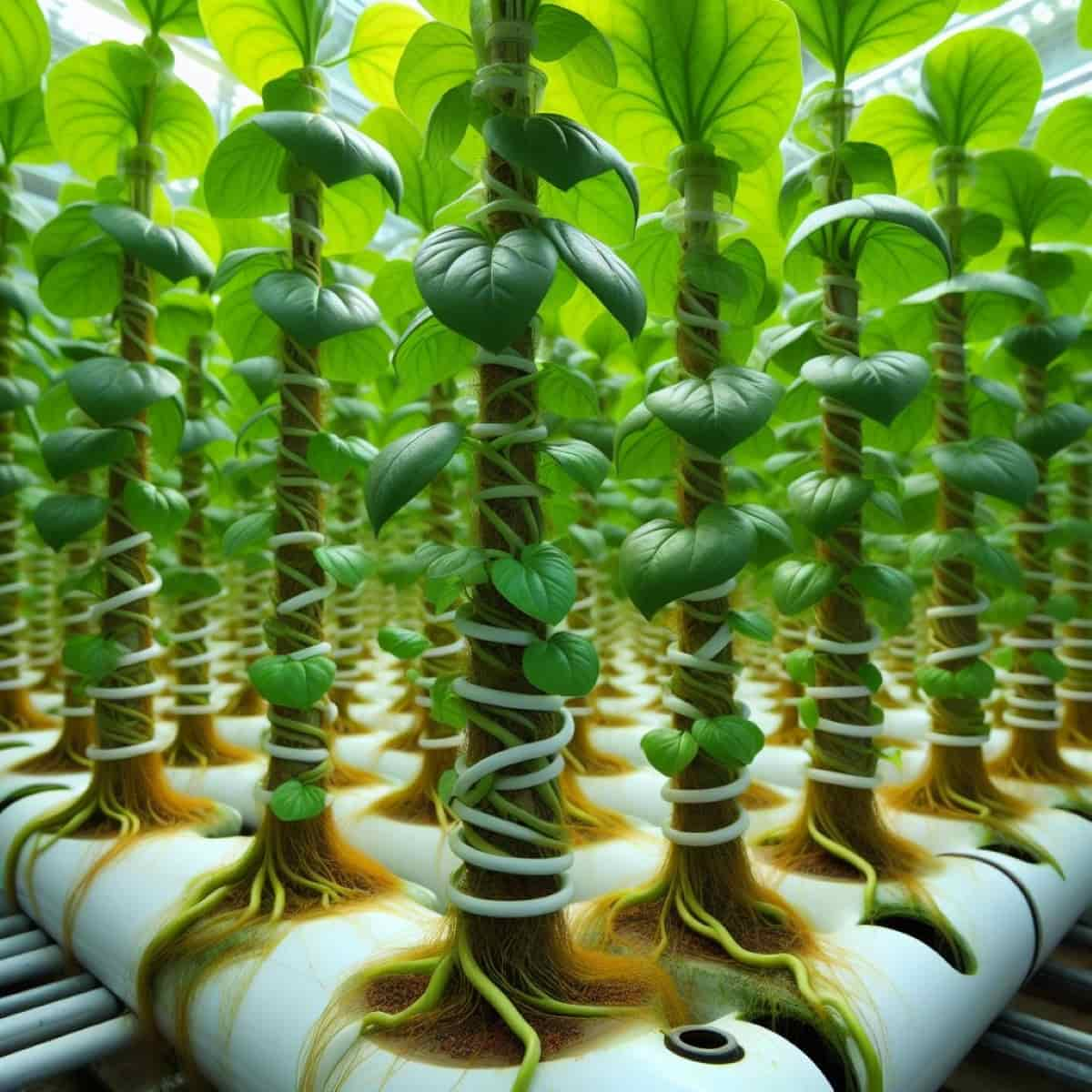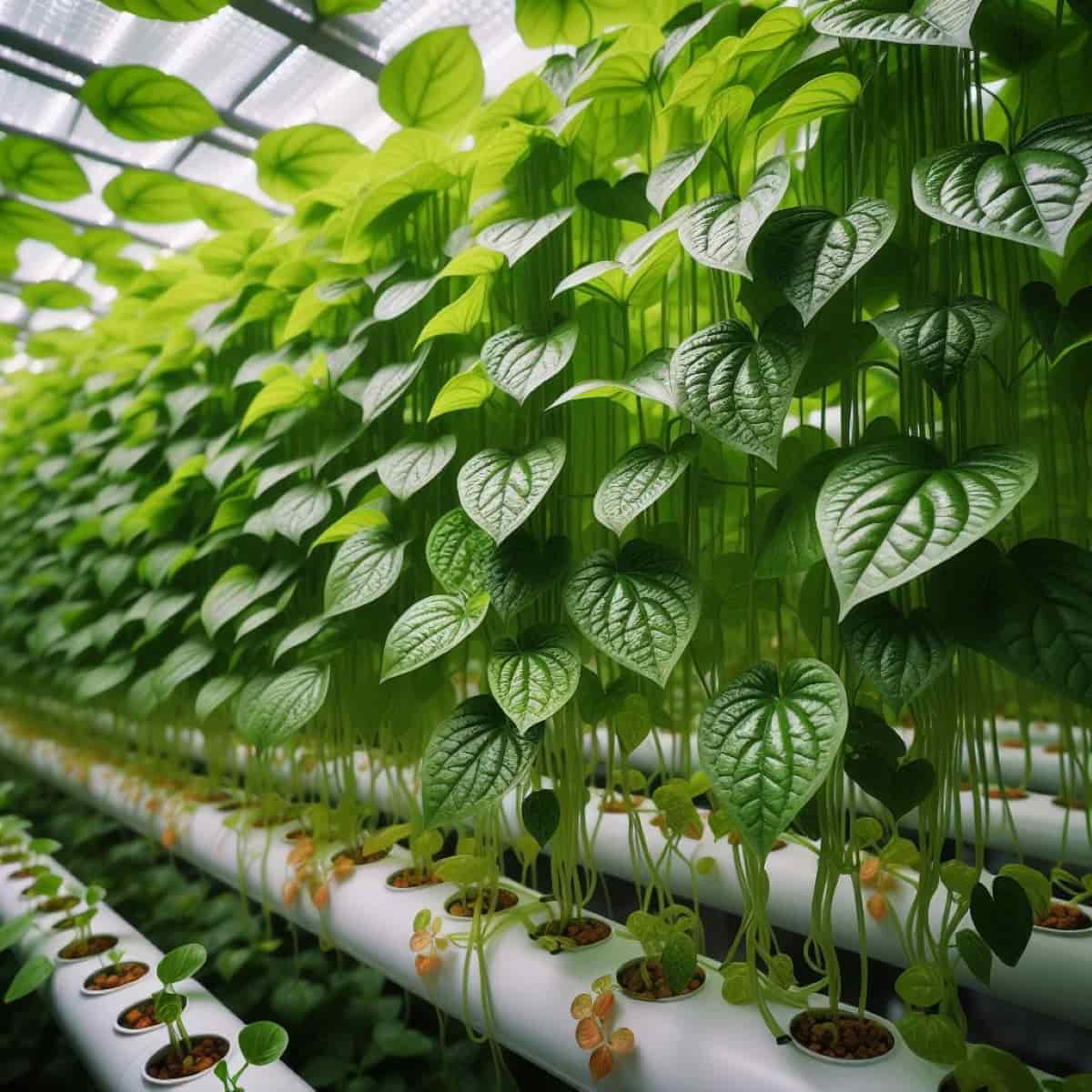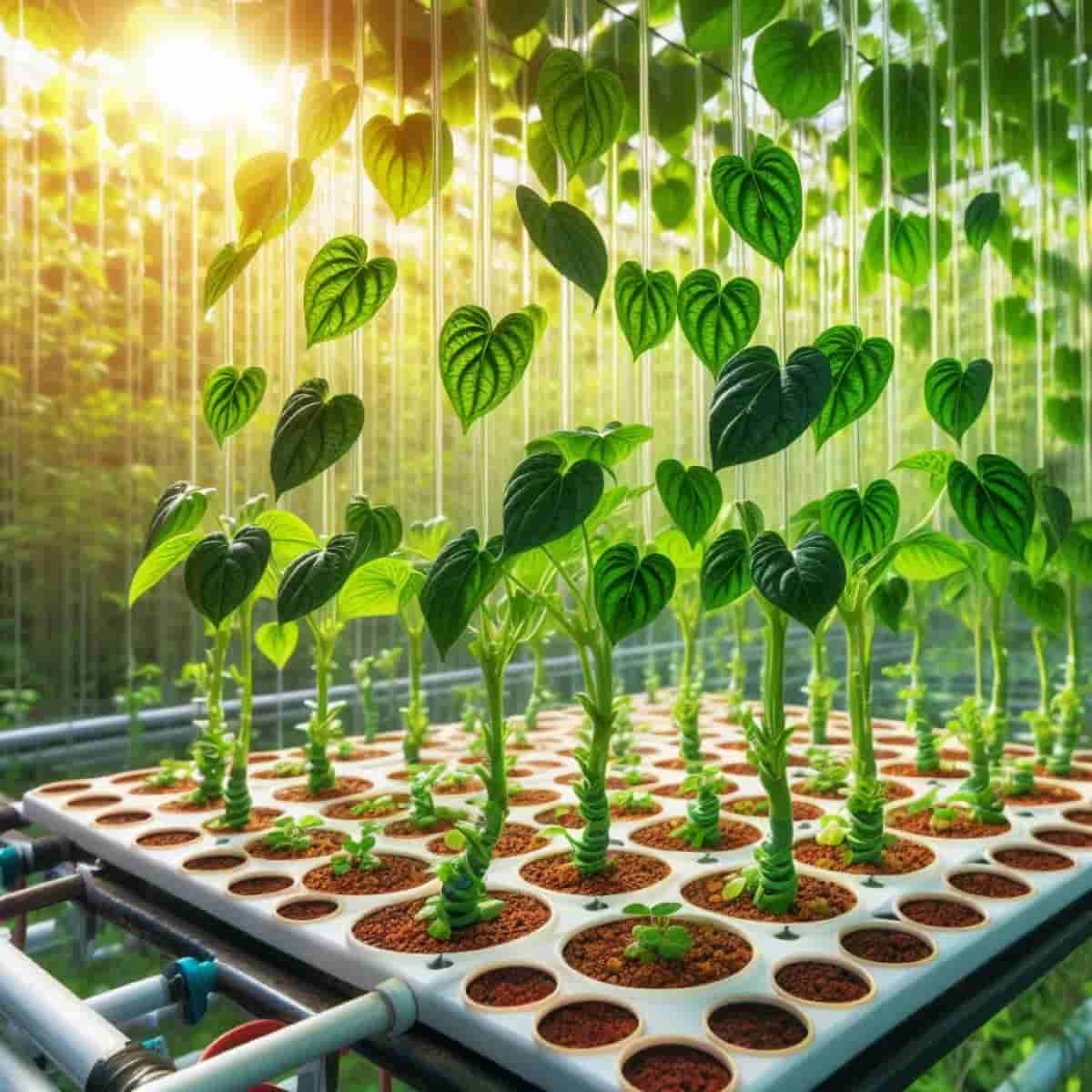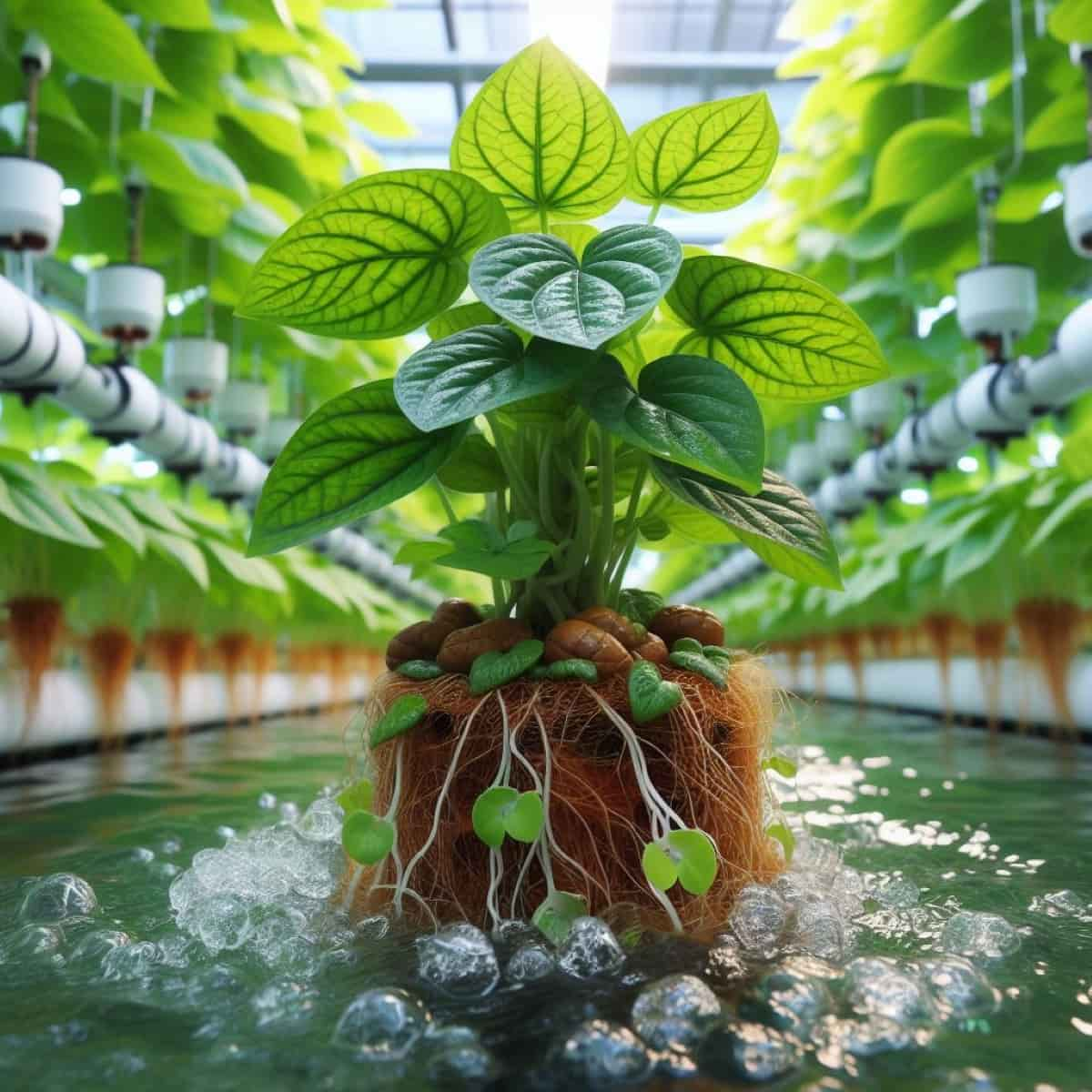Hydroponic betel leaf cultivation offers a controlled and efficient method for optimal growth. This method eliminates the need for soil, directly providing a nutrient-rich water solution to the plant roots. Understanding the basics of hydroponics is crucial for successful betel leaf cultivation in this system.

How to Grow Hydroponic Betel Leaf
Understand the Basics of the Hydroponics System
Hydroponics involves cultivating plants without soil, relying on nutrient solutions to deliver essential elements directly to the plant roots. Key components include a reservoir for nutrient solution, a pump for circulation, and a growing medium to support plant stability. pH and nutrient levels must be regularly monitored and adjusted for optimal growth. Hydroponics facilitates precise control over environmental factors, promoting faster growth and higher yields.
Select the Right Betel Leaf Variety for Hydroponic Growth
Selecting the suitable betel leaf variety for hydroponic growth ensures a successful and productive cultivation experience. Two excellent choices for hydroponic systems are the Pooja and Magahi varieties. Pooja betel leaf is known for its adaptability to soil-less environments, exhibiting vigorous growth and a rich flavor profile. Its heart-shaped leaves are aesthetically pleasing and well-suited for hydroponic setups. Magahi, another resilient variety, boasts disease resistance and thrives in nutrient-rich water solutions.
Its medium-sized leaves have a distinct aroma and taste, making them popular choices for culinary and medicinal purposes. When choosing a betel leaf variety, consider factors such as growth habits, resistance to diseases common in hydroponics, and the specific attributes desired for consumption. Both Pooja and Magahi varieties align well with the controlled conditions of hydroponic systems, offering a promising choice for growers seeking optimal results in this innovative cultivation method.
Set Up a Hydroponic System for Betel Leaf Cultivation
- Choose System Type: Based on available space and resources, choose a suitable hydroponic system, such as nutrient film technique (NFT) or deep water culture (DWC).
- Set Up Reservoir: Install a reservoir to hold the nutrient solution. Ensure it is light-tight to prevent algae growth and maintain a consistent temperature.
- Select Growing Medium: Use a sterile, soil-less medium like coconut coir or perlite to support betel leaf plants in the hydroponic environment.
- Install Water Pump and Tubing: Set up a water pump for nutrient circulation and tubing to deliver the solution to plant roots.
- Monitor pH and EC Levels: Regularly check and adjust pH and electrical conductivity (EC) levels to maintain an optimal nutrient balance.
- Provide Adequate Lighting: Install appropriate grow lights to ensure sufficient photosynthesis.
- Temperature and Humidity Control: Maintain a stable environment with suitable temperature and humidity levels for betel leaf growth.
- Planting and Maintenance: Plant betel leaf cuttings or seeds in the growing medium and monitor plant health, adjusting nutrient levels as needed.
Optimize Nutrient Solutions for Betel Leaf Growth
To maximize betel leaf growth in a hydroponic system, tailor nutrient solutions to meet specific needs. Use a balanced hydroponic fertilizer with essential elements like nitrogen, phosphorus, and potassium, supplemented with micronutrients like iron and magnesium. Regularly monitor nutrient levels and adjust concentrations based on plant development stages. Maintain a pH between 6.0 and 6.5 for optimal nutrient absorption. Consider incorporating organic supplements to enhance overall plant health and flavor profile.
In case you missed it: Essential Steps for Planting Betel Leaf Seeds or Cuttings

Manage Light and Temperature for Hydroponic Betel Leaf
Provide betel leaf plants with adequate light using high-quality grow lights for at least 12–16 hours daily. Optimal light conditions enhance photosynthesis, promoting vigorous growth. Maintain a temperature range of 25-30°C during the day and 18-22°C at night. Adequate ventilation is crucial to prevent heat buildup. Implement a timer for consistent light cycles, mimicking natural daylight patterns. By carefully managing light and temperature, you can create an ideal environment for robust hydroponic betel leaf growth and development.
Prune and Traine Betel Leaf in a Hydroponic Setup
Regular pruning and training are essential for optimizing betel leaf growth in hydroponic systems. Begin by removing yellow or damaged leaves to redirect nutrients to healthier growth. Employ techniques like topping to encourage lateral branching, enhancing leaf production. Utilize trellises or stakes to support vertical growth and ensure proper spacing between plants. Pruning and training promote better light penetration, improve air circulation, and facilitate efficient nutrient absorption, resulting in healthier and more abundant betel leaf harvests.
Prevent Pests and Diseases in Hydroponic Betel Leaf Cultivation
Implement proactive measures to safeguard hydroponic betel leaf crops from pests and diseases. Maintain a clean environment, regularly removing debris and maintaining proper hygiene. Introduce beneficial insects like ladybugs or predatory mites to control pests. Monitor humidity levels and ensure adequate ventilation to deter fungal diseases.
In case you missed it: How to Increase Betel Leaf Yield: Proven and Practical Techniques

Apply organic pesticides or neem oil as needed, avoiding chemical residues in the hydroponic system. Quarantine new plants before introducing them to prevent potential contamination. Consistent vigilance and preventive strategies are crucial for sustaining a pest- and disease-free hydroponic betel leaf cultivation environment.
Harvest and Post-Harvest Care of Hydroponically Grown Betel Leaf
Harvesting hydroponically grown betel leaves requires careful attention to ensure optimal flavor and quality. Harvest individual leaves once they reach a desirable size, typically 6-8 inches long. Use sanitized scissors to cut leaves close to the stem. Post-harvest, rinse leaves gently to remove any residual nutrients.
Store them in a cool, dark place or refrigerate to maintain freshness. Regularly inspect for signs of disease or pests during storage. Implement a continuous harvesting approach, picking mature leaves while allowing younger ones to develop. This method promotes sustained productivity and ensures a regular supply of high-quality hydroponically grown betel leaves.
Troubleshoot Common Issues in Hydroponic Betel Leaf Cultivation
- Nutrient Imbalance: Monitor and adjust nutrient levels to prevent deficiencies or excesses.
- pH Fluctuations: Ensure pH levels between 6.0 and 6.5 for optimal nutrient absorption.
- Waterlogging: Prevent waterlogged conditions by maintaining proper drainage in the growing medium.
- Temperature Extremes: Maintain a consistent temperature range of 25-30°C during the day and 18-22°C at night.
- Pests and Diseases: Implement integrated pest management strategies and maintain a clean environment to prevent infestations.
- Lighting Issues: Ensure proper light intensity and duration for robust photosynthesis.
- Pruning Neglect: Regularly prune to enhance air circulation and light penetration for healthier growth.
Explore Advanced Techniques for Maximizing Yield in Hydroponic Betel Leaf
- Vertical Farming: Utilize vertical space efficiently, stacking growing layers to increase the number of plants.
- Climate Control: Implement precise environmental control systems, optimizing temperature, humidity, and CO2 levels for accelerated growth.
- Drones and Sensors: Employ technology for real-time plant health monitoring, allowing immediate response to any issues.
- Nutrient Film Technique (NFT) Optimization: Fine-tune nutrient delivery in NFT systems, ensuring a consistent flow over roots for enhanced nutrient absorption.
- Light Spectrum Manipulation: Experiment with LED grow lights to tailor light spectra, promoting specific growth phases and maximizing photosynthesis efficiency.
- Hydroponic Automation: Integrate automation for nutrient dosing, pH adjustment, and irrigation, minimizing human error and optimizing plant care.
- Hydroponic betel leaf growers can achieve higher yields and greater efficiency in their cultivation processes by incorporating these advanced techniques.
In case you missed it: Betel Leaf Farming in Greenhouses: Benefits and Best Sustainability Practices

Conclusion
In conclusion, cultivating betel leaf hydroponically demands a holistic approach, from selecting suitable varieties and establishing a robust system to fine-tuning nutrient solutions and employing advanced techniques. By mastering these facets and addressing challenges promptly, growers can enjoy a consistent, high-quality harvest of betel leaves, unlocking the full potential of hydroponic cultivation for this versatile and valued plant.
- Feed Your Flock for Less: Top 10 Tips to Save on Chicken Feed
- Ultimate Guide to Ossabaw Island Hog: Breeding, Raising, Diet, and Care
- Hatching Answers: The Top 10 Reasons Your Chickens Aren’t Laying Eggs
- Eggs and Economics: Breaking Down the Cost of Raising Backyard Chickens
- Defend Your Greens: Proven Methods to Keep Iguanas Out of Your Garden
- Ultimate Guide to Cinnamon Queen Chicken: A Comprehensive Guide for Beginners
- Ultimate Guide to California Tan Chicken: Breeding, Raising, Diet, Egg-Production and Care
- Ultimate Guide to Marsh Daisy Chicken: Breeding, Raising, Diet, and Care
- 10 Types of Chicken Farming Businesses You Can Start for Profits